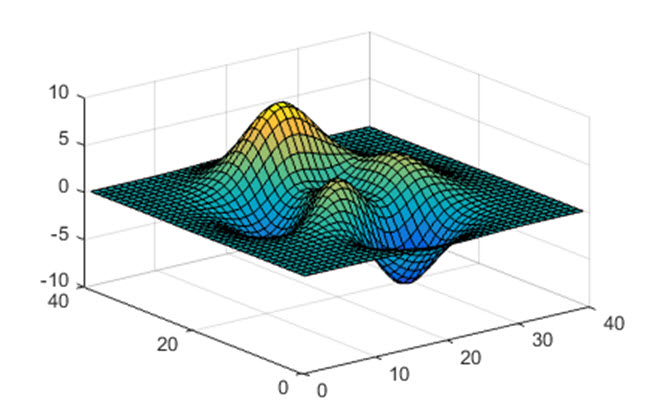Latest News
October 17, 2014
MathWorks has announced its latest release of MATLAB, MATLAB 2014b, with important new features for scientific and engineering programmers: a new graphics system for better visualization, support for processing data sets too large to fit into memory, and source code management through Git and Subversion. These capabilities allow for better analysis and for sharing of results across widely distributed organizations.
 Plots such as this can be generated using the new MATLAB graphics system with updated colors, fonts and styles.
Plots such as this can be generated using the new MATLAB graphics system with updated colors, fonts and styles.The new graphics system includes updated colors, fonts and styles that make it easier to visualize data in charts and graphs. The colors, lines and graphs are simply a more modern style, making them sharper looking and easier to read and interpret.
With the increasing prevalence of big data, MATLAB continues to innovate in ways that make large data files easier to process, manage and analyze. This includes operating on 64-bit processors to accommodate more memory and the ability to tap multiple processors using the PARFOR instruction. MATLAB code can also be compiled for NVIDIA GPUs (graphics processing units) and run across GPU arrays. Floating point operations are generally much faster and more efficient using GPUs rather than industry-standard CPUs.
But 2014b goes beyond that with support for the MapReduce programming technique directly within MATLAB. For external data processing, Big Data can be moved to the Hadoop No-SQL database. These provide the ability to break a problem up into small pieces and process data incrementally, then combine it together into a global result. In fact, MapReduce is the same technique used by Google to rapidly process search queries and return large numbers of relevant results. It is especially appropriate in environments where there are a large number of available processors to analyze data.
Big Data features support the increasing size of datasets generated through MATLAB analyses. “It’s important to work with data sizes that exceed the capacity of system memory,” says Kevin Cohan, product marketing manager, MathWorks.
Ultimately, Big Data features will be useful in a wide variety of industries, from oil and gas to aerospace to anything involving finite element analysis (FEA). Engineers will be able to write routines that can be easily broken up into pieces that can be processed in parallel across processor or core arrays.
Collaboration Through Code Access and Sharing
On the collaboration front, MATLAB 2014b enables source code management through the open source project portals Git (and the cloud version GetHub) and Subversion. Both are open source solutions that have become popular in recent years with software developers interested in easily creating projects individually and in small teams that can be easily shared across the Internet.
For those who want to hold their software closer to the organization, both Git and Subversion can be copied from open source locations and used internally. Both still provide the ability to manage MATLAB source files either on site or in the cloud. In addition, many individual contributors and academics use GitHub to create and manage individual projects that can be shared across a community, making it very a very popular way to demonstrate expertise and let others provide feedback.
Finally, MATLAB 2014b incorporates better facilities for packaging custom toolboxes so that they can easily be ported to other systems and environments. MATLAB programmers who build solutions that they would like to share now have the ability to fully understand the files and resources used by their toolboxes, and more easily package them up for use by other teams. Engineers can upload projects to either source code management system, in the enterprise or in the cloud, and make code and algorithms available to colleagues and peers.
Engineering groups working in distributed teams will most benefit from this release of MATLAB. Even the better graphics environment helps collaboration, enabling engineers working remotely to contribute to data evaluation and recommendations for design improvements.
MATLAB 2014b has compelling features for a wide variety of engineering teams and product design organizations. Its focus on sharing code and results across the organization and across the larger MATLAB community, abilities that MATLAB has always encouraged. MATLAB 2014b adds concrete ways for academics, scientists, and engineers to extend the idea of sharing still further.
Info:
Subscribe to our FREE magazine, FREE email newsletters or both!
Latest News
About the Author
Peter VarholContributing Editor Peter Varhol covers the HPC and IT beat for Digital Engineering. His expertise is software development, math systems, and systems management. You can reach him at [email protected].
Follow DE






